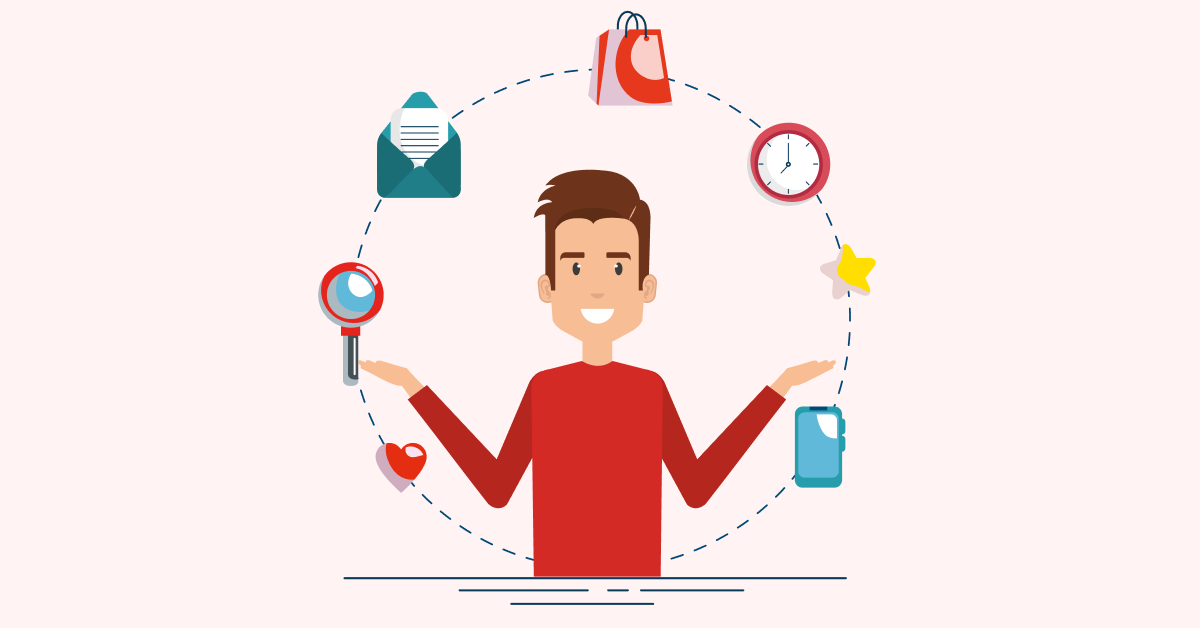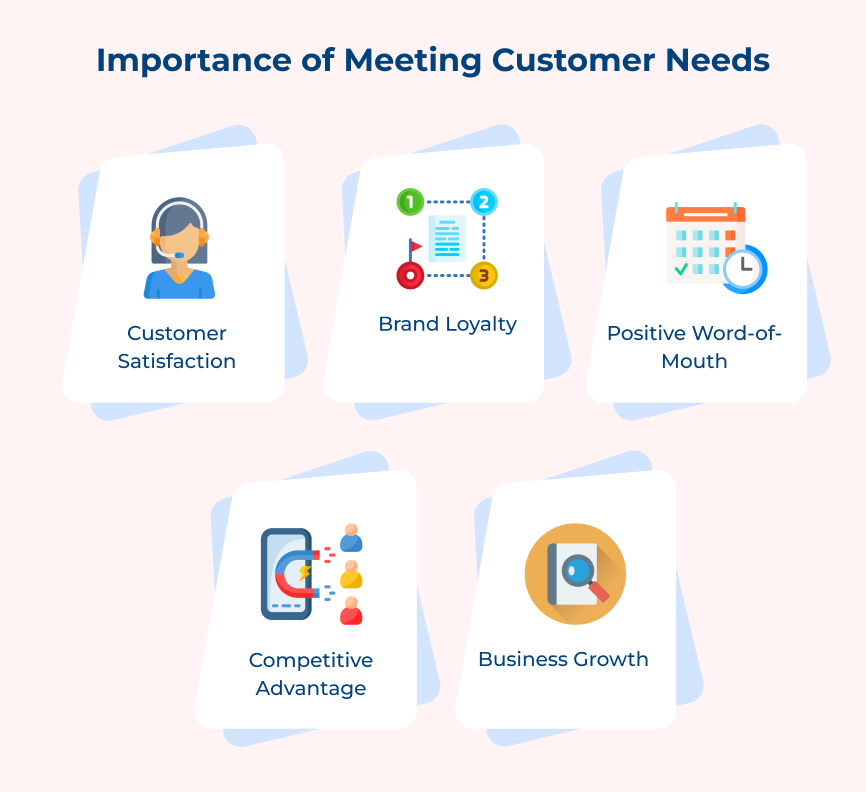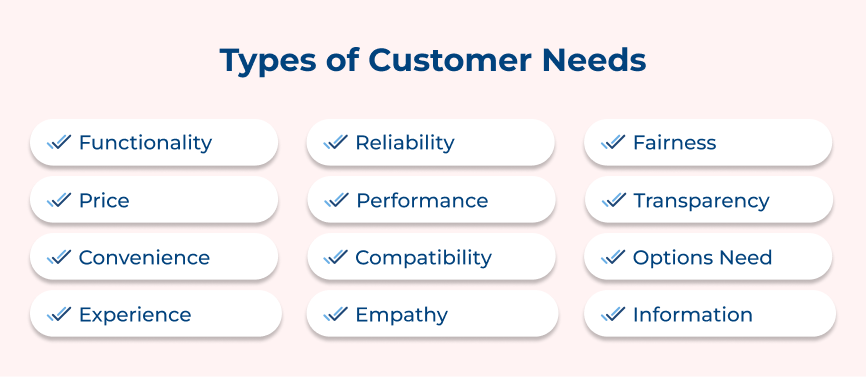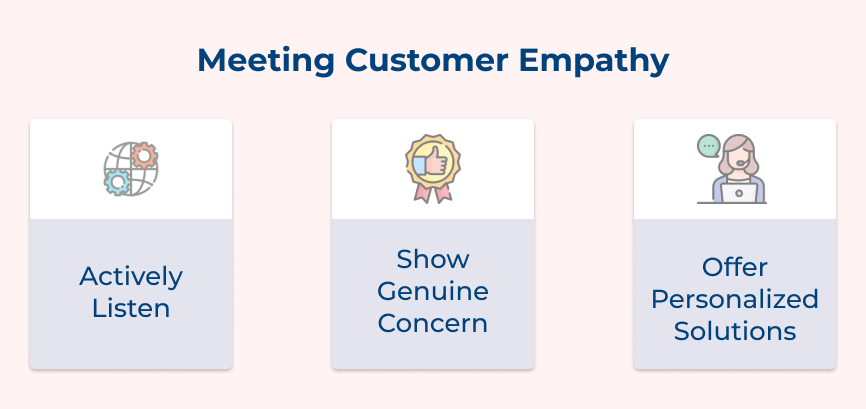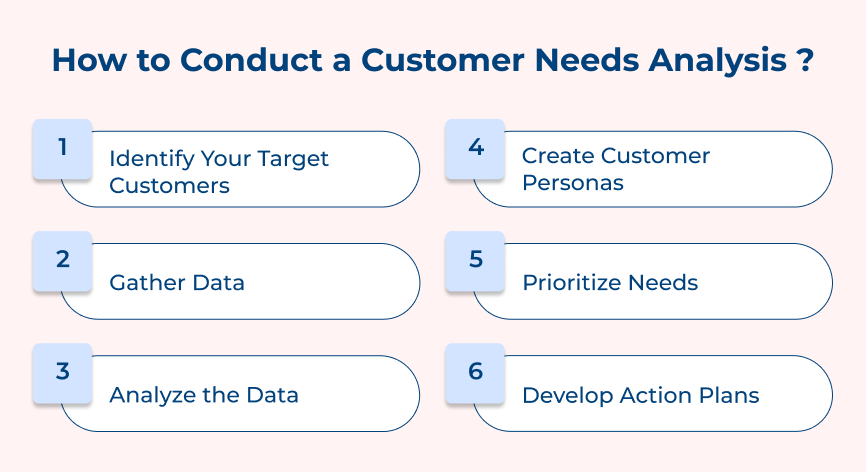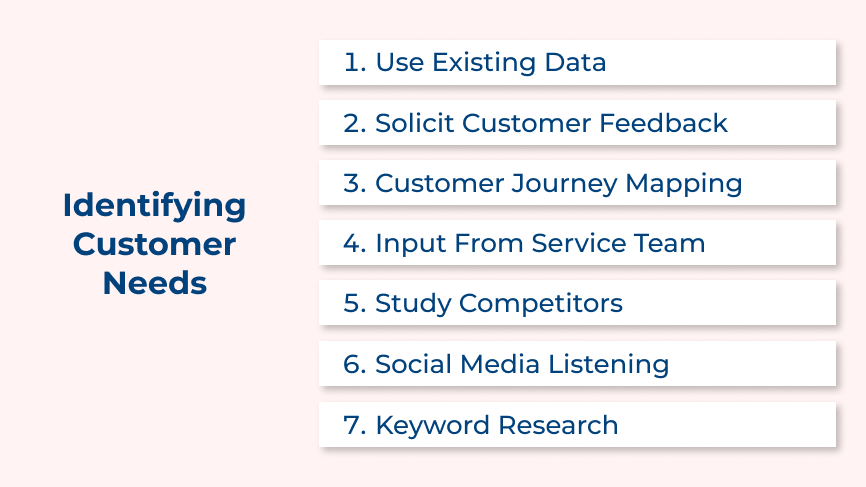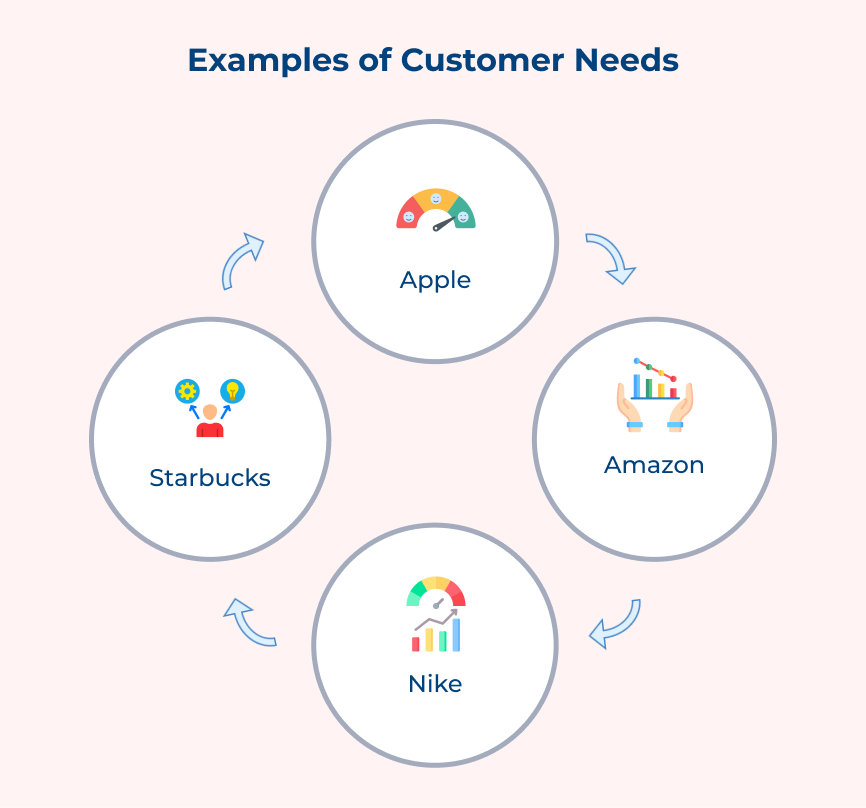A. Product Needs
Product needs refer to the essential requirements and desire that a product must fulfill to satisfy its target audience. Understanding these needs is crucial for designing, developing and delivering a product that meets customer expectations.
1. Functionality
Functionality is a common type of customer need in products, referring to the practicality and ease of use that a product offers to its users. Customers often look for products that are not only visually appealing but also efficient and user-friendly.
Let’s take an example of a customer purchasing a smartphone that has all the latest features and technologies, but the user interface is confusing to navigate. The customer may feel frustrated and dissatisfied with the product, even though it has all the desired functionalities.
How to meet:
- Conduct thorough research on customer preferences and behaviors to understand what functionalities are most important to them.
- Strive for simplicity and intuitiveness in product design to ensure ease of use for customers.
- Regularly gather feedback from customers through surveys or reviews to continuously improve and update product functionality based on their evolving needs.
2. Price
Price is a common type of customer need in products, as everyone wants value for their money. Customers are always looking for products that offer a good balance between quality and affordability. The importance of this customer need cannot be understated, as pricing directly influences purchasing decisions and can make or break a sale.
One use case where price becomes a key factor is when a customer is comparing similar products from different brands. If one product is significantly cheaper than the other, the customer is more likely to choose the cheaper option, assuming the quality is comparable.
How to meet:
- Offer competitive pricing: Conduct market research to ensure that the prices are in line with those of the competitors.
- Provide discounts and promotions: Customers love a good deal, so offering discounts or running promotions can attract more customers.
- Value-based pricing: Instead of solely focusing on cost, consider the value that the product offers and price it accordingly.
3. Convenience
Convenience is a common type of customer need in products, as it refers to the ease and efficiency with which customers can use or access a product or service. Consumers value convenience more than ever, as they look for ways to simplify their lives and save time. The importance of convenience as a customer need cannot be overstated, as it can greatly impact a customer’s satisfaction and loyalty towards a brand.
Let’s take an example of a mobile banking app that allows customers to easily transfer funds, pay bills and check their balance without having to visit a physical branch. It is meeting the convenience needs of its customers. When the customer’s need for convenience is not met properly, it can result in frustration, dissatisfaction and lead to customers seeking out alternatives.
Pro tips:
- Provide multiple channels for customers to access and interact with the brand.
- Implement technologies to simplify and expedite processes for customers.
4. Experience
“Experience” is a common type of customer need in products, as consumers want to feel satisfied and have a positive interaction with the products they purchase. Companies must prioritize providing customers with a memorable experience whether it’s a seamless shopping experience or customer service.
Let’s take an example of a customer shopping online for a new pair of shoes. When the website is slow to load, difficult to navigate or lacks product information the customer’s experience will be frustrating. It may lead to the customer abandoning their purchase and seeking out a competitor who offers a smoother shopping experience.
How to meet:
- Improve website and mobile app usability to make it easy for customers to find what they are looking for.
- Offer personalized recommendations and promotions based on customer preferences.
5. Reliability
Reliability is a crucial customer need that can greatly impact a consumer’s overall satisfaction with a product. It refers to the consistency and dependability of a product to perform as expected over time. Customers seek reliability in products to ensure they can count on them to function properly and deliver the promised results.
One example showcasing the importance of reliability is in the automobile industry. Imagine purchasing a car that constantly breaks down or requires frequent repairs. The lack of reliability can lead to frustration, inconvenience and extra expenses for the customer. Here the car manufacturer fails to meet the customer’s need for a reliable product.
How to meet:
- Quality control: Implement strict quality control measures throughout the production process to ensure that products meet high standards and are free from defects.
- Product testing: Conduct thorough product testing to identify any potential issues or weaknesses before the product is released to the market.
- Warranty and customer support: Offer warranties and reliable customer support services to address any problems that may arise post-purchase. Demonstrating a commitment to customer satisfaction and product reliability.
6. Performance
Performance is a common type of customer need when it comes to products. Customers want products that are efficient, reliable and effective in delivering the promised results. Performance is a key factor that influences the purchasing decisions of consumers whether it’s a smartphone, a car or a household appliance.
Let’s explore an example of a customer who purchases a high-performance laptop for their work. They expect the laptop to be fast, responsive and able to handle multiple tasks without lagging. The customer may become frustrated and dissatisfied if the laptop fails to meet these performance expectations. They may even decide to switch to a competitor’s product that offers better performance.
How to meet:
- Use high-quality materials and technology to enhance the performance of the product.
- Provide regular updates and maintenance to keep the product functioning at its best performance level.
7. Compatibility
Compatibility is a common type of customer need in products, especially now when technology is constantly evolving. The need arises when customers want products that can easily work with other devices or software they already own. When this customer need is successfully met, customers experience convenience and efficiency in their daily lives.
One example showcasing the importance of meeting compatibility needs is Apple’s ecosystem of products. Apple has successfully created a range of devices that work seamlessly together. Allowing customers to easily transfer files, messages and even make phone calls across their devices.
Pro tips:
- Conduct thorough research on their target market to understand their existing devices and software preferences.
- Develop products with open-source compatibility or provide software updates to ensure compatibility with a wide range of devices.
- Offer customer support and tutorials to help customers integrate new products into their existing setups.
B. Service Needs
Understanding and addressing service needs is crucial for ensuring customer satisfaction and operational efficiency. It involves fulfilling the specific requirements and expectations of clients or users to maintain a high standard of service delivery.
8. Empathy
Empathy is a common type of customer need in service that involves understanding and connecting with the emotions or experiences of the customer. The need arises when a customer is feeling unhappy with a product or service and is seeking support from the service provider. 96% of buyers agree that empathy from customer service agents is important.
